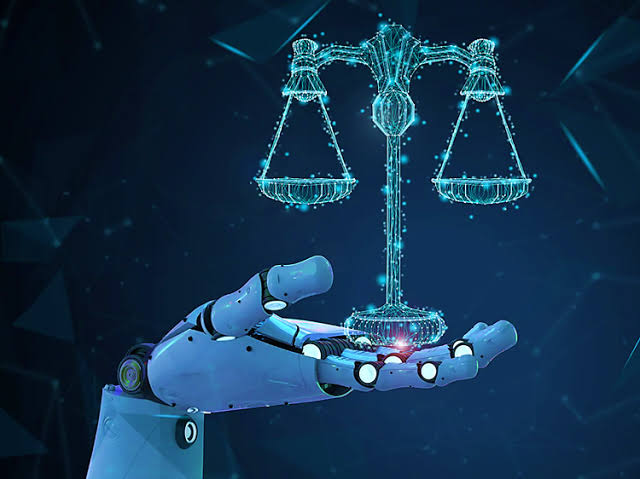Artificial intelligence (AI) is being used more and more in the legal sector to assist in improving client services. One of this technology’s most exciting uses is chatbots driven by AI, which can improve legal services in a variety of ways.
Computer programmes known as chatbots replicate human discussions using natural language processing (NLP). They are able to recognise the purpose of a user’s question and respond appropriately by employing AI. As a result, they are perfect for giving legal advice because they can do it with accuracy and speed.
Additionally, chatbots can be employed to automate tedious processes like data entry and document filing. This gives lawyers more time to work on more difficult duties like research and analysis. Additionally, chatbots can be utilised to speed up the information gathering process from clients, enabling lawyers to get the required information more efficiently and precisely.
Access to justice is a major issue in many countries all over the world. This problem is exacerbated by a number of circumstances, such as the dearth of legal aid programmes, the high cost of legal counsel, the lack of acquaintance with one’s legal rights and remedies, and the drawn-out nature of the legal process.
The purposes of chatbots, advantages of employing legal chatbots, and limitations of chatbots will all be covered in this article.
Functioning of legal chatbots
The methods that legal chatbots function are as follows:
1. Information gathering: Through questions or prompts, the chatbot collects information from the user, which may include the type of legal issue, the location, and any other pertinent details.
A message requesting information about the nature of their legal issue is presented to the user when they first use the chatbot. Suppose the user said they had a traffic ticket and wanted to appeal it in their response. The chatbot enquires further questions, such as the place, date, and kind of the offence, in order to gather the pertinent information.
2. Processing the data: The chatbot looks over the information it has collected and applies machine learning techniques to identify the user’s legal issues and provide pertinent information.
3.Finding an appropriate response: The chatbot searches its knowledge base or database for pertinent legal facts and sources, such as legislation, rules, and precedents.
4. Providing guidance The chatbot provides the user with guidance or legal counsel in accordance with the information gathered and reviewed. This can mean presenting legal documents, suggesting a course of action, or directing the user to the right resources or services.
The chatbot’s answer in the event of a traffic ticket can contain instructions on how to contest the ticket or give guidance on traffic regulations. The chatbot may also offer to create the required legal documents or offer a link to an appropriate website.
5. recommending a lawyer: it may direct users to a trained lawyer for extra assistance if their legal issue is complex or falls outside the chatbot’s area of competence.
Legal chatbots: Why they’re Beneficial
There are several benefits to using chatbots, including the following:
1. Cost-effective: Chatbots can enhance access to legal services for those who cannot afford traditional legal services because they are less expensive than human attorneys and law companies.
2. Effectiveness: Users and legal professionals can save time by using chatbots, which can offer quick, automated answers to frequently asked questions.
3. Consistency: Chatbots can provide reliable and consistent information since they are programmed to follow predetermined norms and procedures. This can help to ensure that legal advice is accurate and consistent.
4. Confidentiality: Customers may feel more comfortable discussing sensitive legal matters with a chatbot than a real lawyer, which can increase privacy and confidentiality.
5. Accessibility: Legal chatbots can provide information and direction in a variety of languages and formats, increasing the accessibility of legal services for people with varying needs and backgrounds.
6 Scalability: Because chatbots may respond to numerous questions at once, they are scalable for use in larger law firms or organisations.
Negative aspects of employing legal chatbots
The following are some restrictions that apply to authorised chatbots:
1. Limited scope: Using pre-programmed algorithms, legal chatbots are trained to react to certain legal questions and provide legal counsel. As a result, they could be unable to give comprehensive legal advice in challenging cases that need for human expertise.
2.Lack of personalization: Rather than taking into account a user’s unique legal circumstances, legal chatbots are designed to provide broad legal advice. The guidance offered by chatbots may not be tailored specifically for the user as a result.
3. Language limitations: Since only a few languages can be supported by legal chatbots, users who speak other languages may find them to be of less use.
4. Technical issues: Just like any other technology, legal chatbots might have glitches and failures. The clarity and trustworthiness of the legal advice provided may be impacted by this.
5. Ethical issues: The unlicensed practise of law, confidentiality, and conflicts of interest are just a few of the ethical problems that legal chatbots could bring up. Users incur the risk of placing an undue reliance on chatbots, which could have detrimental legal and financial ramifications.
Conclusively, the introduction of chatbots driven by AI is revolutionising the legal industry. Legal professionals can streamline their workflows and give their clients better service by automating repetitive procedures and offering individualised guidance. The impact that AI-powered chatbots will have on the legal profession is just getting started, and it is obvious that they will continue to influence the direction of the sector.


